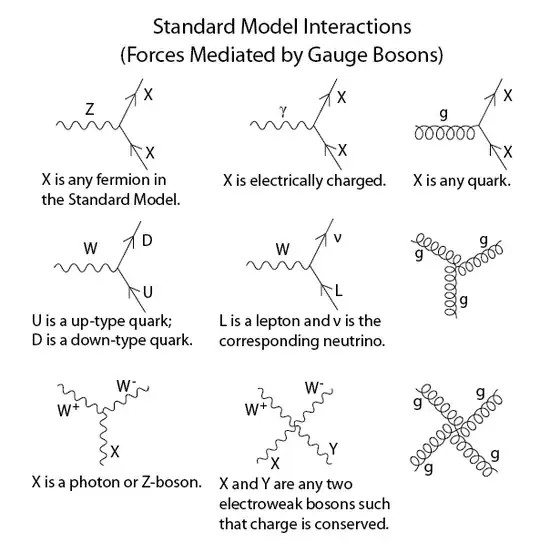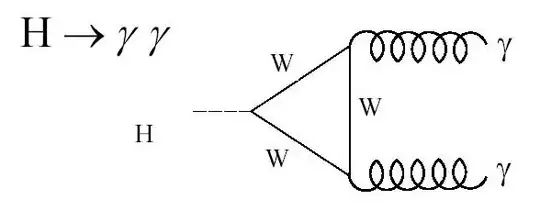Is there any method we can use to convert a photon into a gluon, as they are similar in many respects. For instance, if we pass a $100\,{\rm keV}$ photon through a strong electric field, can this photon convert into a gluon?
3 Answers
The possible particle interactions in the standard model can be summarized with the vertices of Feynman diagrams:
Combining the top middle and top right vertex can give an interaction with a photon in, a quark "loop" and a gluon out. Gluons are confined, however, so you can't actually produce a free gluon this (or any other known) way.
- 18,883
- 9
- 68
- 125
To illustrate @knzhou's comment to another answer:
A gluon is colored and a photon isn't, so that's out of the question. But two gluons can be in a color singlet, and, since you are sending a photon into an electric field, it can interact with a virtual photon of that field to produce two gluons. The process is $\gamma \gamma \to gg$, and the way it works is through either a virtual fermion box diagram, or a virtual Higgs!
So, then, modifying your question to an instructive one, yes, this rare process, time reversed, is behind the first observation of the Higgs.

That is to say, two gluons in colliding hadrons may (through quark loops), form a scalar Higgs field, which is neutral (and a color singlet). But, then, very-very rarely, through the intermediation of (charged!) W bosons, the Higgs can decay to two photons, possible to detect.
Some got extravagantly excited to see it happen: $gg\to h\to\gamma \gamma$.
Study of this process is routine.
- 67,623
No. Gluons have color charge and photons do not. Since color is conserved, there is no process that can convert a single photon into a single gluon.
- 17,377

